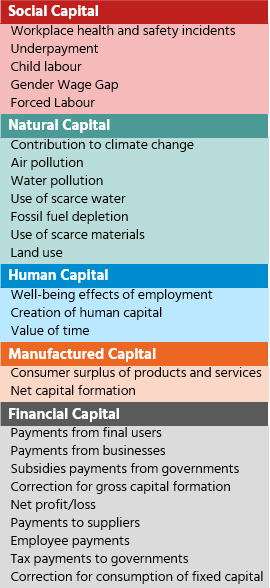Global Impact Database Technical Overview
The Global Impact Database (GID) quantitatively describes environmental, social and economic impacts for companies, countries, and sectors in the global economy.
Economic activity causes impacts throughout the entire economy. The GID estimates this impact through input-output analysis based on data on the interconnectedness of industries in various countries and their environmental, social and economic performance. The impact estimates produced are categorised into capitals and provided in comparable monetised units.
The development of the GID is based on multiple internationally recognised frameworks and frameworks published by Impact Institute. GID data quality is ensured through multiple checking and validation processes, and data cleaning procedures.
While several versions of the GID are already available, further development is still ongoing and updated versions are released annually.

